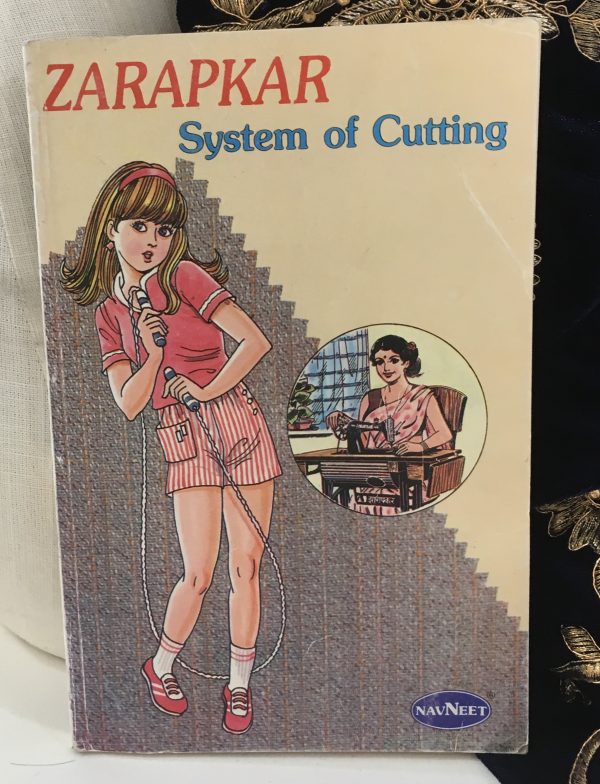Zarapkar: System of Cutting by Shiri K.R. Zarapkar is a good solid standard around here when we need to talk about Indian or Pakistani clothing in the abstract or concrete.

Amazon says of it:
Provides detailed and complete information with instructions about measurements, cutting and sewing of dresses for adults and children, men’s pants, capes, saris, aprons, nightgowns, blouses, as well as many Indian fashion designs. Includes many many excellent illustrations.
And that is true, but let’s go a little deeper here.
First of all, just FYI, this isn’t a sewing manual. It is a tailor’s design and cutting manual that was published by Nanveet Publications of Mumbai. It gives you no sewing instructions, only basic layout and diagrams for designing multiple Indian and Western garments. The Indian garments are cut very traditionally. There is no “modern take on a classic” here really – just classic takes on classics.
It uses both metric and imperial, so anyone in or outside of the United States should be able to use it easily.
The first few chapters walk you through the basic tools and measurement charts of an Indian tailor, then it gets into patterns for skirts, frocks, sleeves, necklines, and housecoats. It takes you through men’s and women’s western style single and double breasted jackets, vests, pants, boys’ shorts, dressing gowns (robes), and “corpulent” jackets (essentially a cutting diagram for those a bit more zaftig), and general women’s dresses. It also has a number of more traditional garments, which is really why we keep this around.
In terms of traditional garments, you can find the drafting instructions for:
- Choli Blouse, a sleeveless v-neck blouse that ties in front.
- Saree Blouse, a very traditional fitted sari blouse with 8 darts and a short sleeve.
- High Neck Blouse, basically a sari blouse where the back neckline projects up onto the neck to various degrees.
- Raglan Blouse, a fitted blouse with raglan sleeves with closure.
- Katori Blouse, a very fitted blouse with multiple panels to fit the bust perfectly.
- Punjabi Kameez, a simple kameez with darts in front and back and simple neckline.
- Pyjama Pant, a loose straight cut pant.
- Chudidar Pant, a bias cut gathered waist pant fitted from the knee down.
- Salvar Pant, a straight cut pant with a flared hip and thigh.
- Modern Salvar, a modified version of a salvar with a long yoke from the waist to the mid-hip.
- Half-Open Plain Shirt, a shirt that is essentially a dress shirt with a henley button front to a Wetserner.
- Manilla Shirt, a kind of loose, square cut shirt similar to a bowling shirt in the US.
- Nehru Shirt, a tunic-length long shirt with a half-front opening and a stand collar.
- Kalidar Kurta, a more traditional cut kurta with triangular inset gusset panels under the arms.
- Nehru Jakit, a sleeveless fitted jacket with more substance than a vest and a stand collar.
- Kameez, with 14 styling variations and an introductory commentary.
All of the garments and cutting diagrams are rendered in line drawings, so the format is very straightforward.
The nice thing about this being a traditional reference is that you only get so much Western influence. The Indian garments are Indian, not suggestions of Indian. It gets used up here a lot by 1st generation Indian students who want something interesting but more traditional and conservative and 2nd and 3rd generation students who want to redesign some of the pieces from a legitimately traditional starting point.
Altogether, it is a good reference for traditional Indian clothing. Totally worth a look.
It can be hard to find stateside, though, so you may want to ask somebody going to India to pick you a copy up on their next trip.

